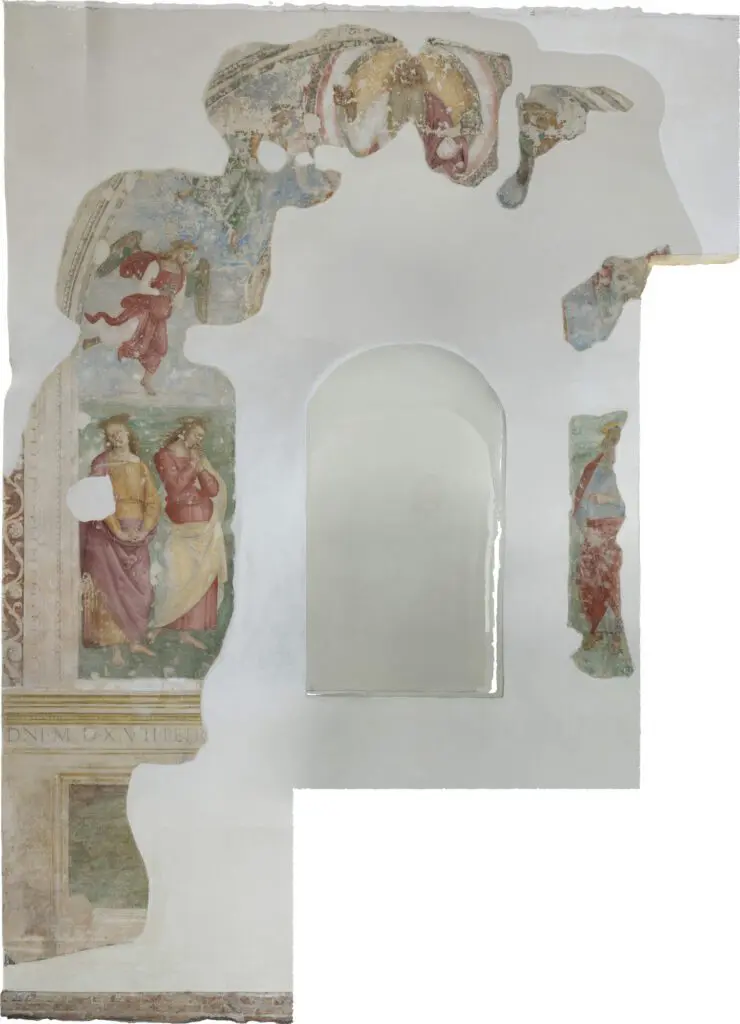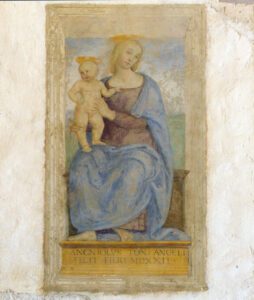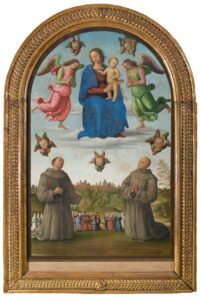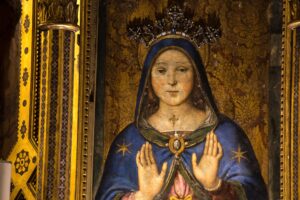In 1517, Perugino was in Città della Pieve, where he painted the fresco of the Deposition from the Cross in the Church of St. Mary of the Servants (the religious Order of the Servants of Mary).
Commissioned by the Brotherhood of the Star, it would be split into parts after an invasive restoration
Commissioned by the Brotherhood of the Star, the fresco is set in the chapel of Our Lady of the Star, the first on the right on entering by the main gate. There can still be read an inscription that includes the name of the client, the year, and the name of the celebrated painter who had been entrusted with the job.
The whole building underwent a radical, invasive process of restoration and renewal in the 17th century. Architectural elements in the Gothic style were covered with Baroque stucco decorations, which have given the nave and the altars their current look. On that occasion, the chapel of Our Lady of the Star was partially demolished; only the right wall and the back wall were left untouched. The creation of a door, in order to connect the choir with the adjacent convent, caused the destruction of parts of the Deposition. Moreover, all the frescoes in the chapel wound up hidden behind a cavity wall. No sooner than 1834 would a German painter, Antoine Remboux, bring them back to light.
Fragments of the Deposition from the Cross, with Virgin Mary and the Apostles
The core of the painting is Jesus’ body being taken down from the cross, of which solely the face has remained visible. Some men, standing on three ladders that lean against the cross, support Christ’s body while another man props two ladders from below. From the viewpoint of composition, the ladders add spatial depth and perspective to the whole.
Mary, who has fainted, lies on the ground on the left. Her figure is surrounded by a group of women – some of them kneeling, some standing – who watch the scene, their sweet faces marked by suffering. In the lower area of the fresco, on the right, some Apostles witness the event.
The ruined parts of the painting allow us to get not more than a faint idea of the spacial depth of the landscape in the background, which has been fragmented by both the past restorations and the passing of time.
The other Perugino fresco in the chapel
On the right wall of the chapel of Our Lady of the Star, there is a recess in which a sculpture of the Pietà used to be positioned. It was probably the same statue currently set above the high altar of the church. All around the niche, another fresco by Perugino shows the mourning personages who were meant to encircle the sculpture of Christ supported by his Mother.
Though only fragments have survived of both frescoes, in the years after their rediscovery they inspired many artists, Purist, Nazarene, and Pre-Raphaelite. The figures that have remained visible can still convey a heartbreaking sentiment thanks to the expert style of one of the most important masters of Italian Renaissance.










